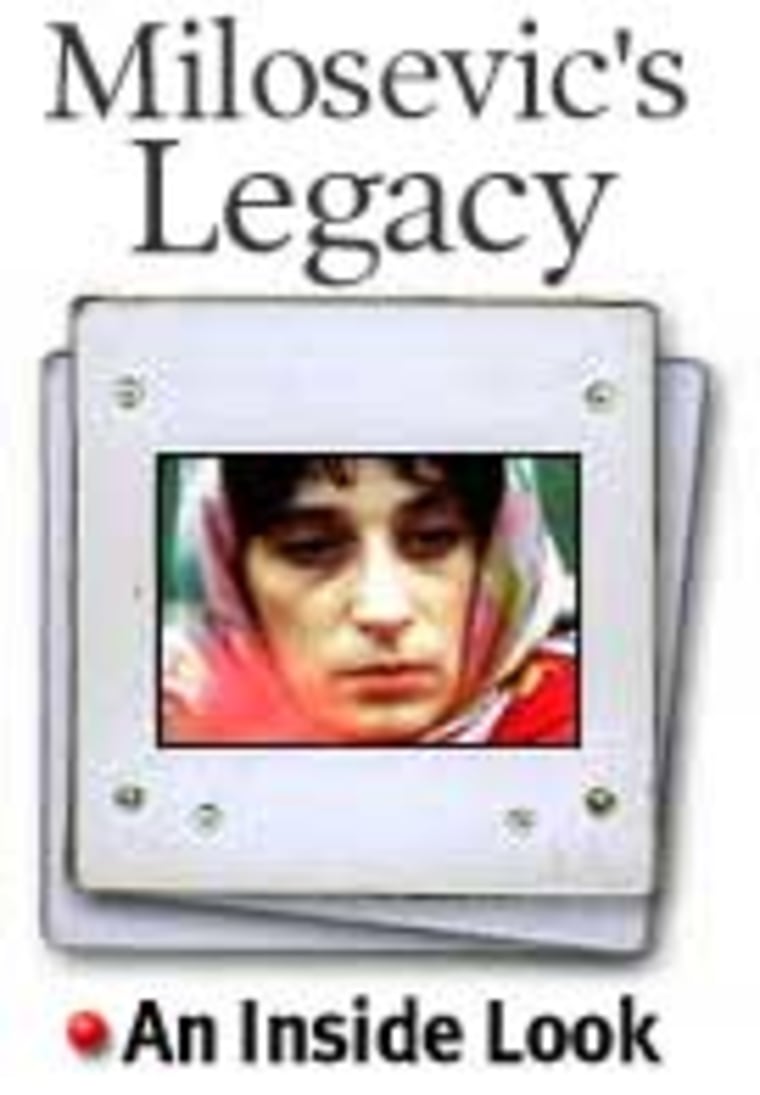While the incursion by ethnic Albanian guerillas into northwestern Macedonia looks and sounds increasingly like war, a cease-fire announced last week continues to hold in the Balkans’ other new flashpoint in southern Serbia. But if you want to know just how fragile this cease-fire is, come to the village of Konculj, and meet Zenga, a self-styled Albanian rebel, who goes by the same name as his AK-47 automatic rifle.
ZENGA, WHO looks about 30 but won’t disclose his real age, along with a number of other key details in his resume, resembles Boris Becker in a black jump suit.
In U.S. military parlance, Zenga is an EAAG (pronounced “e-YAG”) — an Ethnic Albanian Armed Guerilla. His black beret gives away his affiliation with the awkwardly named LAPMB — the Liberation Army of Presevo, Medveda and Bujanovac — a militia formed during the reign of former Yugoslav President Slobodan Milosevic, and determined to press on with its armed struggle, despite recent political changes in Belgrade. The stated aim of the LAPMB is to “liberate” the large Albanian towns inside southern Serbia, oppressed for years, it says, by the Serb regime.
Ostensibly, that means giving the mostly Albanian population equal rights and freedoms. But NATO officials — and many Balkans experts here and abroad — are calling the recent spate of violent attacks on Serb police and civilians nothing more than a land grab.
SOME REBELS ARE ARMY DEFECTORS
Zenga says he heard about the fledgling rebel group a year ago. He took the name Zenga from the anti-Belgrade Croatian National Militia he joined in the early 1990s, after defecting from the Yugoslav army he described as “anti-Albanian.” Zenga’s name is penned in dark bold letters on the butt of his Kalashnikov as he holds it up to me, flashing a cagey smile.
“Sure we want equal rights with the Serbs, and this is how we’ll get it. Nothing else works with them. We tried negotiations for over 10 years.” Now he’s caressing the sniper telescope on his weapon. “But you know, possession of this is 90 percent of the law!”
InsertArt(965880)There are dozens of Zengas in this rebel town that sports a huge red Albanian flag on its tiny post office and LAPMB graffiti on nearly every dilapidated wall. Like Zenga, they are all dressed in black, chain smoking as they walk nervously across Konculj’s only avenue, or sipping Turkish coffee and smoking more American cigarettes at a small outdoor cafe, their rifles strapped to their sides.
They have cause for concern. Only about five miles south of the village, hundreds of Serb soldiers — part of the Yugoslav army — have taken up new positions, atop machine-gun mounted armored personnel carriers, inside a so-called “buffer zone,” a three-mile-wide safety zone created by NATO after the 1999 Kosovo air war.
The zone was intended to separate NATO troops from the retreating Yugoslav army and special police units. It became a no-go area for both KFOR, the NATO-led multinational peacekeeping force, and the Serbs. That vacuum was quickly filled by young Albanian nationalists like Zenga, who could not only procure arms from their “brothers” inside Kosovo, but who were more than willing to use them.
YUGOSLAV ARMY ON TRIAL
Now the same NATO nations that conspired to force the Serbs out of Kosovo and the buffer zone have invited them back into a small but strategic nine-mile wide strip, used by the LAPMB to transport men and weapons from Kosovo into neighboring Macedonia.

If the newly deployed Yugoslav army proves it is able to flush out Albanian extremists like Zenga in its area without resorting to the scorched-earth tactics and mass expulsions of the 1999 Kosovo offensive, then the international community will likely concede yet more of the buffer zone.
Zenga said he has no doubt about what will happen to the current cease-fire if the Serbs move further north to take control of Konculj. “Everyone you see here lives by two codes: Be prepared to die for your land and people, and never trust a Serb.”
Zenga, a strange mix of friendliness and razor-edged nerves, waxes poetic about his gun and his future: “When it’s quiet like this, I remember how much I’d like to put ‘Zenga’ down, maybe go back to school and get a real life. But then I recall how the Serbs treated us when we didn’t have guns.”
FIGHTING FOR A GREATER KOSOVO
Asked whether he is fighting for a “Greater Albania,” Zenga laughs. “Listen, if you were a Kosovo Albanian, would you want to live in Albania? Are you kidding? Albania is sheer madness!”
InsertArt(965883)Zenga says his fight is for a Greater Kosovo, an independent nation grouping the province — still officially part of Serbia — and “Albanian territory” inside southern Serbia as well as in Macedonia. A Greater Kosovo is the latest goal of NLA, or National Liberation Army, currently fighting Macedonian police and troops from the hills bordering Kosovo.
Zenga is clean-shaven, soft-spoken, and a barometer that measures the potential firestorm that is the Balkans. He believes that America — and its NATO allies — will support the LAPMB, just as it did the KLA, in Kosovo in 1999. He’s heard of changes, back in Belgrade, but pays them little heed. Most of all, he’s sure that Serb forces will “show their true colors” in the buffer zone, as they did, previously, in Croatia, Bosnia and Kosovo.
If Zenga is mistaken, the platoon of U.S. peacekeepers perched on a nearby hilltop, observing his unit’s movements through heavy binoculars, will have little to worry about. At worst, the peacekeepers will face a few potshots from Kosovo Albanians irate over America’s apparent disloyalty.
But if Zenga is right, the next shots fired here could trigger a conflict big enough to drag the entire region into war.
NBC’s Jim Maceda is on assignment in the Balkans.